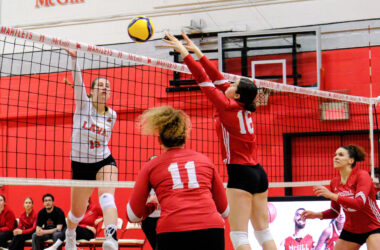By virtually any measure, last month’s 2010 Commonwealth Games in Delhi were a complete disaster. A small budget wasn’t the issue but rather a large one was. With a cost of 30,000 Crore (300 billion Rupees), or close to $7 billion USD, they were easily the most expensive Commonwealth Games ever. They cost as much as any Olympic Games, except of course for the Beijing Games in 2008. All this money, and India has a 35 per cent poverty rate. But that’s another issue.
Right before the games began, the athletes’ villages had flooded, rendering many of the dormitories uninhabitable. Then, a pedestrian bridge leading to the stadium collapsed. There have been rumours of unsafe and unregulated working conditions, including child labour and a meningitis outbreak amongst construction workers. In a country with strict labour laws and a stable economy, none of these things would have happened. I’m not suggesting that large athletic events should be entirely westernized: I’m merely proposing that they should be safe.
In May, the Canadian Olympic Committee (COC) decided that their athletes competing in Delhi would arrive in India just in time for their specific events, and then return straight home. If they missed a ceremony or a teammate’s competition, tough luck. It was clear that the COC didn’t believe that the Indian Games would be a success, and would be participating in only the most literal and passive way. In short, the COC felt that the conditions would be poor, the city dangerous, and the experience detrimental for the athletes.
The Indian Olympic Committee, as well as many Canadian and Indian pundits, was incensed. While India was offended, Canada was right.
We can ignore the one Canadian athlete who returned home with typhoid fever. We can assume that he didn’t get the shots required to travel to India. But what we can’t ignore is the accusation that tainted water in the swimming pool led to dozens of athletes being poisoned. We can’t ignore the story of Annamay Pierse, a Canadian athlete and 2012 medal hopeful, who will lose significant time from her competitive prime because she returned home with Dengue fever, a disease so rare there have only been a handful of reported cases in Canada and the U.S. in the last half-century. It’s a disease that’s been used in the past by the U.S. as a form of biological warfare. An athlete catching the bug in competition is simply unacceptable.
While this may seem trivial in isolation, consider that Brazil, the host of the 2016 Olympic Games, is the world’s leading centre for Dengue outbreak, amongst other exotic diseases. It’s extremely important for all countries to have equal opportunity to compete on an international level. Nonetheless, that doesn’t diminish the right of every competitor to be safe.
The experience in Delhi bodes poorly for both the Rio 2016 Olympics and every future Olympics held in the developing world. The Delhi debacle is proof that a Third World Olympic dream is just that. Some will argue that South Africa’s success at the World Cup proves that other developing countries are viable hosts for an event this big. The World Cup and the Olympics, however, are incomparable in logistical difficulty. The World Cup holds a maximum of four events per day, spread out in cities all over the country, where there are many smaller local governments and individual logistical hurdles to cross. An Olympic Games features 17 days of over 120 hours of competition per day. If Delhi and India can’t handle an event half this size, how will Rio cope with the real deal? Many point to the 2014 World Cup in Brazil as an Olympic audition. Trust me, the two aren’t even close.







